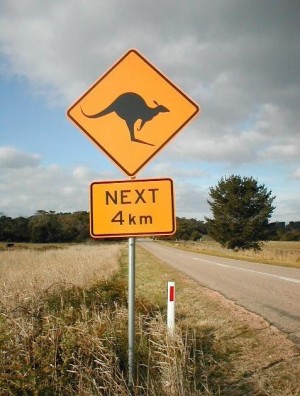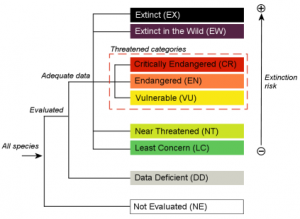Wildness
“In wildness is the preservation of the world.”
~ Henry David Thoreau, ‘Walking‘ (1862), [US Transcendentalist author (1817 – 1862)] .Wildness is the quality of being wild or untamed; a quality produced in nature (Thoreau 1906); that which emerges from a forest (Micoud 1993).
The relationship between ‘wildness‘ and ‘wilderness‘ is wilderness is a place where wildness occurs.[1] Both are disappearing due to human encroachment, damage and contempt for nature. Our commitment to utter respect for the rights and freedoms of wildness in nature are underpinned by our philosophical belief in habitat-centric ethics.
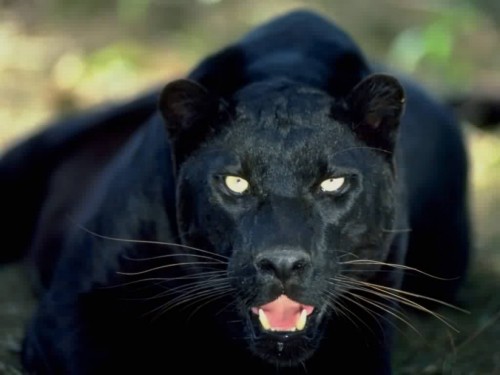 Black Jaguar / Melanistic Jaguar (Panthera onca)
Black Jaguar / Melanistic Jaguar (Panthera onca)
.
>My ‘Pagan’ – a tribute to loved animals lost
.
Wildlife
.
The Habitat Advocate acknowledges that since human industrialisation and population growth, many nonhuman species have been unforgivably either forced into extinction or forced by humans toward the edge of their extinction.
Yet humans continue to focus on breeding their own babies.
Land mammals, ocean mammals, native birds, fish, amphibians, invertebrates , fungi, algae and plant species have unsanctimoniously become victims of our human breeding pathogen.
At The Habitat Advocate, our special conservation focus is with the plight of land mammals and specifically top order predators – those at the top of the food chain and indeed at most risk of extinction. Throughout this website we liberally use the term ‘wildlife‘ to refer to top order predator mammals. The priority high risk wildlife are classified by the authoritative International Union for Conservation of Nature (IUCN) as Critically Endangered.
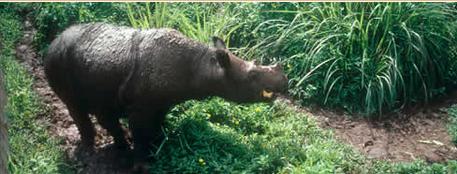 Sumatran rhinoceros (Hairy Rhino) [Dicerorhinus sumatrensis] © WWF ^http://www.panda.org/what_we_do/endangered_species/rhinoceros/asian_rhinos/sumatran_rhinoceros/
Sumatran rhinoceros (Hairy Rhino) [Dicerorhinus sumatrensis] © WWF ^http://www.panda.org/what_we_do/endangered_species/rhinoceros/asian_rhinos/sumatran_rhinoceros/
.
.
Click the following subjects to explore the state of wildlife left on Earth:
(NOTE: this section is still under gestation, and content is yet to be added)
.
NOTE: > = link to internal webpage ^ = link to external website
.
01. >Wildlife
.
02. >Extinct Wildlife (EX)
.
03. >Edge of Extinction (EE)*
.
04. >Extinct in the Wild (EW)
.
05. >Critically Endangered Wildlife (CR)
.
06. >Endangered Wildlife (EN)
.
07. >Vulnerable Wildlife (VU)
.
08. >Near Threatened Wildlife (NT)
.
09. >Least Concern (LC)
.
10. >Data Deficient (DD)
.
11. >Not Evaluated (NE)
.
12. >Guide to the IUCN Red List
.
13. >Wilderness
.
14. >Australia’s Wildlife Protection
.
15. >Ecological Communities
.
* Species on the Edge of Extinction (EE) is a category we have taken the liberty to create. These are the species currently at imminent risk of extinction.We consider 90% of all UN funding (not just IUCN, all UN) ought to be directed to this category. The severity exceeds crimes against humanity irrespective of the scale, because humanity is not on the edge of extinction..
IUCN Red List of Threatened Species
.
The IUCN Red List Categories and Criteria (see below) are intended to be an easily and widely understood system for classifying species at high risk of global extinction. The assessments are based upon the best available evidence undertaken by IUCN-delegated Red List Authorities, obtained by the IUCN Red List Criteria Working Group (CRWG) and adopted by the IUCN Council. The most recent update of the IUCN Red List categories and criteria is 2008 and the most recent assessment and categorisation of the world’s species at risk of extinction was conducted in 2008.
Click to search: ^The IUCN Red List of Threatened Species™
We provide the following useful guides that source information from the IUCN Red List:
2. ^IUNC 2008 Red List of Critically Endangered Mammals
3. ^IUNC 2008 Red List of Critically Endangered Mammals in Australia
IUCN confirms the world’s mammals are at ‘extinction crisis’
.
At the IUCN World Conservation Congress in Barcelona on 6th October 2008 , according to an update to The IUCN Red List of Threatened Species™ , the world’s mammals have been confirmed to be at an extinction crisis, with almost one in four at risk of disappearing forever. At least 1,141 of the 5,487 mammals on Earth are known to be threatened with extinction, yet the real situation could be much worse since 836 mammals have been listed as Data Deficient.
At least 76 mammals have become extinct since 1500.
IUCN Director General, Julia Marton-Lefèvre, warned that:
“Within our lifetime hundreds of species could be lost as a result of our own actions, a frightening sign of what is happening to the ecosystems where they live.” “We must now set clear targets for the future to reverse this trend to ensure that our enduring legacy is not to wipe out many of our closest relatives.”
“The reality is that the number of threatened mammals could be as high as 36 percent,” says Jan Schipper, of Conservation International and lead author in a forthcoming article in Science. “This indicates that conservation action backed by research is a clear priority for the future, not only to improve the data so that we can evaluate threats to these poorly known species, but to investigate means to recover threatened species and populations.”
‘The results show 188 mammals are in the highest threat category of Critically Endangered, including the Iberian Lynx (Lynx pardinus), which has a population of just 84-143 adults and has continued to decline due to a shortage of its primary prey, the European Rabbit (Oryctolagus cuniculus).
‘China’s Père David’s Deer (Elaphurus davidianus), is listed as Extinct in the Wild. However, the captive and semi-captive populations have increased in recent years and it is possible that truly wild populations could be re-established soon. It may be too late, however, to save the additional 29 species that have been flagged as Critically Endangered Possibly Extinct, including Cuba’s Little Earth Hutia (Mesocapromys sanfelipensis), which has not been seen in nearly 40 years.
‘Nearly 450 mammals have been listed as Endangered, including the Tasmanian Devil (Sarcophilus harrisii), which moved from Least Concern to Endangered after the global population declined by more than 60 percent in the last 10 years due to a fatal infectious facial cancer.
‘The Fishing Cat (Prionailurus viverrinus), found in Southeast Asia, moved from Vulnerable to Endangered due to habitat loss in wetlands. Similarly, the Caspian Seal (Pusa caspica) moved from Vulnerable to Endangered. Its population has declined by 90 percent in the last 100 years due to unsustainable hunting and habitat degradation and is still decreasing.
‘Habitat loss and degradation affect 40 percent of the world’s mammals. It is most extreme in Central and South America, West, East and Central Africa, Madagascar, and in South and Southeast Asia. Over harvesting is wiping out larger mammals, especially in Southeast Asia, but also in parts of Africa and South America.
‘The Grey-faced Sengi or Elephant-shrew (Rhynchocyon udzungwensis) is only known from two forests in the Udzungwa Mountains of Tanzania, both of which are fully protected but vulnerable to fires. The species was first described this year and has been placed in the Vulnerable category.
‘According to Dr Jane Smart, Head of IUCN’s Species Programme,
“The longer we wait, the more expensive it will be to prevent future extinctions,” . “We now know what species are threatened, what the threats are and where – we have no more excuses to watch from the sidelines.”
Source: IUCN World Conservation Congress in Barcelona, Spain, 6 October, 2008^http://www.iucn.org/about/work/programmes/species/red_list/?1695/IUCN-Red-List-reveals-worlds-mammals-in-crisisCategorisation of threatened species on Earth
The International Union for Conservation of Nature (IUCN), based in Switzerland, has compiled a universally authoritative taxonomy of all the Earth’s plants and animals categorising the risk to which each species is threatened with global extinction. Of the plants and animals that have been globally evaluated by the IUCN and included on the IUCN Red List of Threatened Species™ , the broad general catergories have been assigned.
SOURCE: ^http://www.iucnredlist.org/about
From this authoritatve source, The Habitat Advocate shall endeavour to provide information about each of the top order mammals at risk of global extinction.
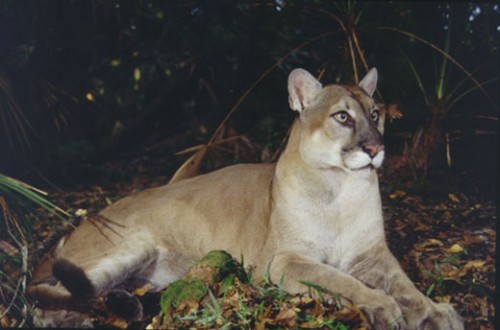 Florida Panther (Puma concolor)
Florida Panther (Puma concolor)
Red List Criteria v7 [2008]
.
“There are five quantatitive criteria which are used to determine whether a taxon is threatened or not, and if threatened, which category of threat it belongs in (Critically Endangered, Endangered or Vulnerable).”
The 5 criteria are:
A. Declining population (past, present and/or projected)
B. Geographic range size, and fragmentation, decline or fluctuations
C. Small population size and fragmentation, decline, or fluctuations
D. Very small population or very restricted distribution
E. Quantitative analysis of extinction risk (e.g. Population Viability Analysis)
Source: ^http://www.iucnredlist.org/documents/redlist_guidelines.pdf
.
Red List Categories v7 [2008]
The taxonomic classification of animals and plants (‘taxon/taxa’ for short), are categorised in the IUCN Red List according to risk of global extinction as per the following table.
| Red List Category for Wildlife | Abbrev. | Official Explanation | Red List Criteria(brief indicative guide only) |
| Extinct | EX | ‘…there is no reasonable doubt that the last individual has died.’ | |
| Extinct in the Wild | EW | ‘…known only to survive in cultivation, in captivity, or as a naturalised population(s) well outside the past range.’ | |
| Critically Endangered | CR | ‘…extremely high risk of extinction.’ |
|
| Endangered | EN | ‘…very high risk of extinction.’ |
|
| Vulnerable | VU | ‘…high risk of extinction.’ |
|
| Near Threatened | NT | ‘…likely to qualify for a threatened category in the near future.’ | |
| Least Concern | LC | Not at risk, and includes those that are widespread and abundant. | |
| Data Deficient | DD | ‘…inadequate information to make a direct or indirect assessement of its risk.’ | |
| Not Evaluated | NE | ‘…it has not yet been evaluated against the criteria.’ |
Interpreting Global Assessments at a Regional Level
The IUCN Red List Categories and Criteria were designed for interpretation at a global scale, yet at a national or more localised scale, the assessed category may well be of a higher risk. For example, taxa classified as Least Concern globally might be Critically Endangered within a particular region where numbers are very small or declining, perhaps only because they are at the margins of their global range.
It is recommended then to refer to guidelines prepared by the IUCN/SSC Regional Applications Working Group.
.
IUCN Red List Definitions v7 [2008]
.
| # | Definition Title | Explanation |
| 4.1 | Population and population size | Total number of mature individuals |
| 4.2 | Subpopulations | Distinct groups with little demographic or genetic exchange |
| 4.3 | Mature individuals (adults) | Total number of viable mature individuals capable of reproduction (factoring ages, sex ratios, reintroduced successes) |
| 4.4 | Generation | Generation length is the average age of parents of the current cohort (newborns) |
| 4.5 | Reduction | Clear actual decline in number of mature individuals |
| 4.6 | Continuing Decline | Projected decline in number of mature individuals |
| 4.7 | Extreme Fluctuations | Population size or distribution area varies widely, rapidly and frequently, typically with avariation greater than one order of magnitude (i.e. a tenfold increase or decrease). |
| 4.8 | Severely Fragmented | Most individuals are found in small and relatively isolated subpopulations (in certain circumstancesthis may be inferred from habitat information).Such small subpopulations with a reduced probability of recolonisation, have a heightened risk of extinction. |
| 4.9 | Extent of Occurrence | Area contained within the shortest continuous imaginary boundary which can be drawn to encompass all the known, inferred or projected sites of present occurrence of a taxon, excluding cases of vagrancy. |
| 4.10 | Area of Occupancy | Area of occupancy is defined as the area within its ‘extent of occurrence’ which is occupied by a taxon, excluding cases of vagrancy. |
| 4.11 | Location | Geographically or ecologically distinct area in which a single threatening event can rapidly affect all individuals of the taxon present. |
| 4.12 | Quantitative Analysis | Extinction probability of a taxon based on known life history, habitat requirements, threats and any specified management options.e.g Population Viability Analysis (PVA) |
References:
[1] http://en.wikipedia.org/wiki/Wildness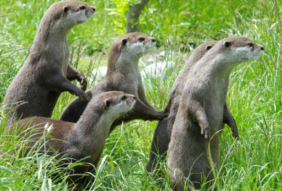 Asian small-clawed otters (Amblonyx cinereus)
are seriously threatened by rapid habitat destruction, hunting and pollution.
Population Trend: Decreasing
^http://www.endangeredspeciesinternational.org/mammals.html
Asian small-clawed otters (Amblonyx cinereus)
are seriously threatened by rapid habitat destruction, hunting and pollution.
Population Trend: Decreasing
^http://www.endangeredspeciesinternational.org/mammals.html
– End of webpage –
